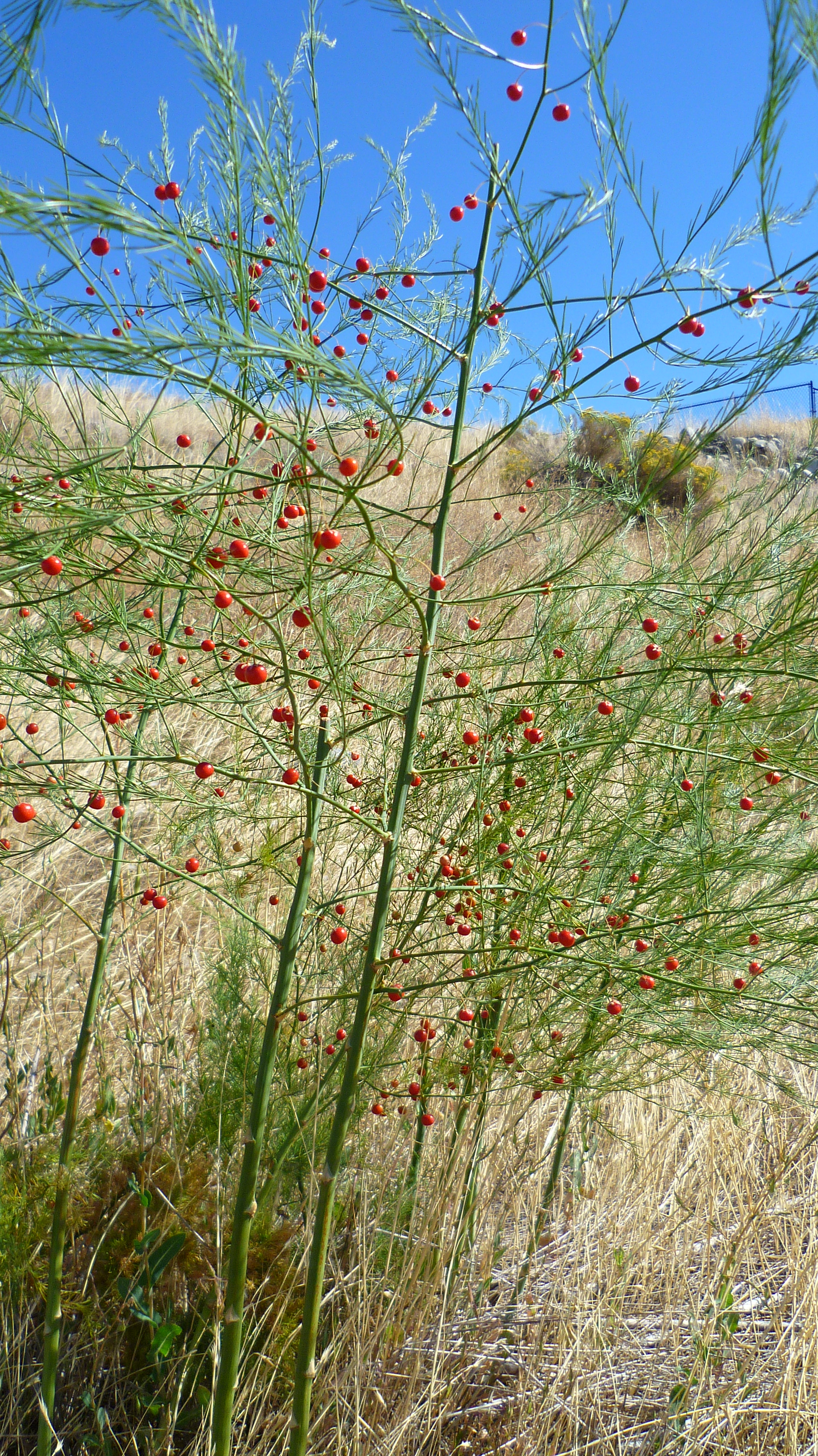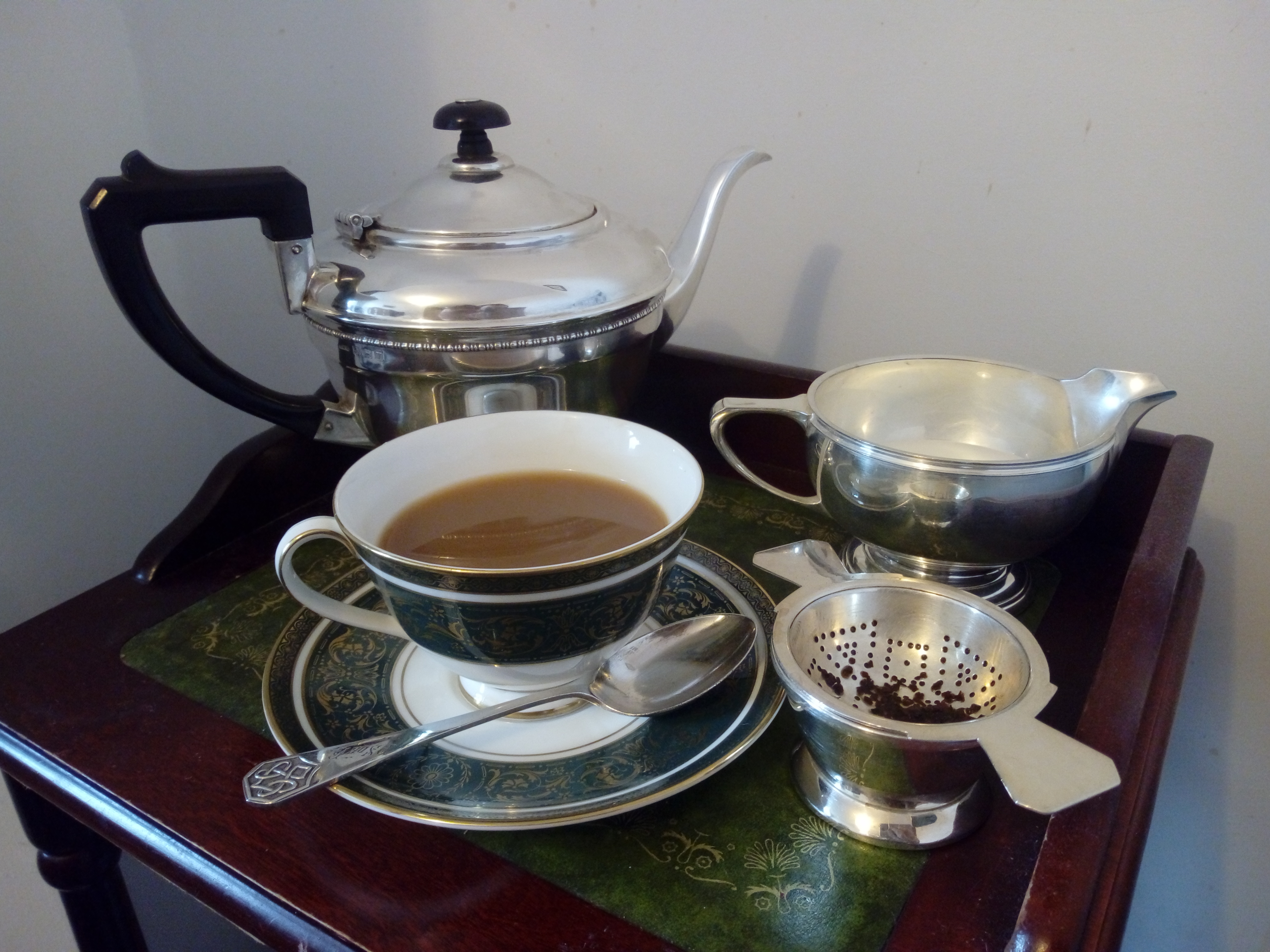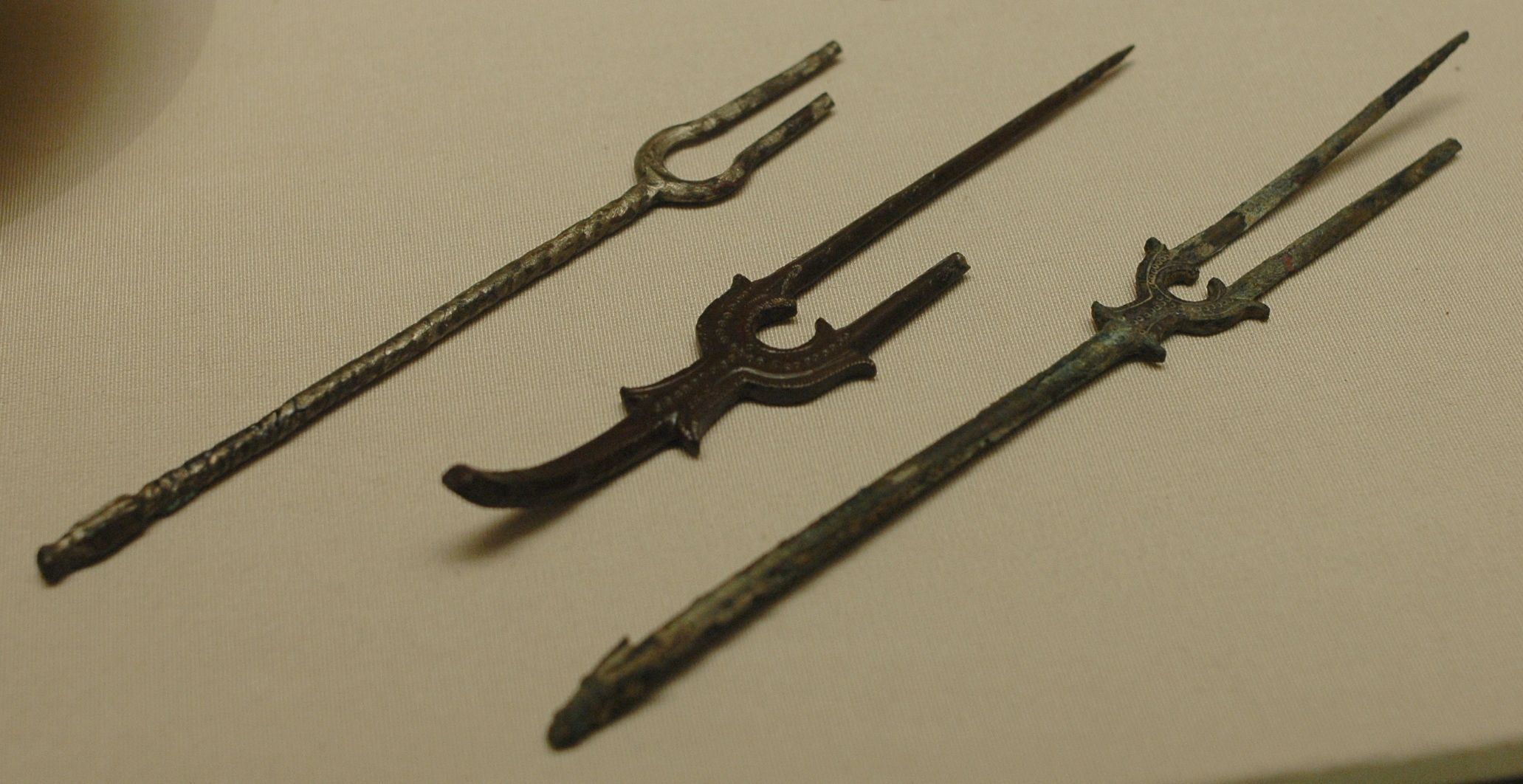|
Lemon Fork
The lemon fork is a small (4+ inches long) serving utensil that is used to move lemon slices. Lemon forks have three long Tine (structural), tines, with the outside tines splayed; ostensibly this arrangement helps to release more juice. Lemon forks became popular in the last quarter of the 19th century alongside other specialized utensils, such as asparagus tongs. One early 20th century cookbook called the lemon fork a "necessity" at the five o'clock tea party. While setting the table, the fork was placed over the slice of lemon. Unlike many specialized utensils of the 19th century, lemon forks are still being used in the 21st century, primarily in restaurants. A lemon fork can double as a pickle fork and may be used to serve cucumber slices, olives, butter cubes and butter pat, pats, smoked fish, and cheese cubes. One etiquette guide from 1966 stated that it is acceptable to use one's fingers to pick up lemon slices in the absence of a lemon fork. References Sources * * ... [...More Info...] [...Related Items...] OR: [Wikipedia] [Google] [Baidu] |
Inch
The inch (symbol: in or prime (symbol), ) is a Units of measurement, unit of length in the imperial units, British Imperial and the United States customary units, United States customary System of measurement, systems of measurement. It is equal to yard or of a foot (unit), foot. Derived from the Uncia (unit), Roman uncia ("twelfth"), the word ''inch'' is also sometimes used to translate similar units in other measurement systems, anthropic units, usually understood as deriving from the width of the human thumb. Standards for the exact length of an inch have varied in the past, but since the adoption of the international yard during the 1950s and 1960s the inch has been based on the metric system and defined as exactly 25.4Millimetre, mm. Name The English word "inch" () was an early borrowing from Latin ' ("one-twelfth; Roman inch; Roman ounce"). The vowel change from Latin to Old English (which became Modern English ) is known as Germanic umlaut, umlaut. The consonant c ... [...More Info...] [...Related Items...] OR: [Wikipedia] [Google] [Baidu] |
Tine (structural)
Tines (; also spelled tynes), prongs or teeth are parallel or branching spikes forming parts of a tool or natural object. They are used to spear, hook, move or otherwise act on other objects. They may be made of wood, bone, metal, or similar materials. The number of tines on tools varies widely a pitchfork may have just two, a garden fork may have four, and a Rake (tool), rake or Harrow (tool), harrow many. Tines may be blunt, such as those on a fork used as an eating utensil; or sharp, as on a pitchfork; or even barbed, as on a trident. The terms ''tine'' and ''prong'' are synonymous. A tooth of a comb is a tine. The term is also used on musical instruments such as the Jew's harp, tuning fork, guitaret, electric piano, music box or mbira (kalimba) which contain long protruding metal spikes ("tines") which are plucked to produce notes. Tines and prongs occur in nature—for example, forming the branched bony antlers of deer or the forked horn (anatomy), horns of pronghorn antelo ... [...More Info...] [...Related Items...] OR: [Wikipedia] [Google] [Baidu] |
Asparagus Tongs
Asparagus (''Asparagus officinalis'') is a perennial flowering plant species in the genus ''Asparagus'' native to Eurasia. Widely cultivated as a vegetable crop, its young shoots are used as a spring vegetable. Description Asparagus is an herbaceous, perennial plant growing typically to tall, with stout stems with much-branched, feathery foliage. It has been known to grow as long as . The 'leaves' are needle-like cladodes ( modified stems) in the axils of scale leaves; they are long and broad, and clustered in fours, up to 15, together, in a rose-like shape. The root system, often referred to as a 'crown', is adventitious; the root type is fasciculated. The flowers are bell-shaped, greenish-white to yellowish, long, with six tepals partially fused together at the base; they are produced singly or in clusters of two or three in the junctions of the branchlets. It is usually dioecious, with male and female flowers on separate plants, but sometimes hermaphrodite flowers are ... [...More Info...] [...Related Items...] OR: [Wikipedia] [Google] [Baidu] |
Tea Party
A tea party is a social gathering event, typically held in the afternoon, featuring the consumption of tea and light refreshments. Social tea drinking rituals are observed in many cultures worldwide, both historically and in the present day. A European style tea party typically features the consumption of loose leaf tea provided in a teapot along with milk and sugar. A variety of food including sandwiches, scones, cakes, pastries and biscuits are commonly served. Traditionally, the food served at tea parties changed seasonally. People typically consumed light foods such as fruit during summer and spring seasons and more substantial fare in fall and winter. Norr, S. (October 2007''Tea & Coffee Trade Journal'' ''179''(10), 66+. Quote: "Tea seeped in tradition: when one thinks of tea ceremonies, they are often assumed to be regal and stuffy events. Afternoon Tea is actually a casual pastime that is seeped in rich traditions; honored since centuries past." Formal tea ... [...More Info...] [...Related Items...] OR: [Wikipedia] [Google] [Baidu] |
Pickle Fork
In cutlery or kitchenware, a fork (from 'pitchfork') is a utensil, now usually made of metal, whose long handle terminates in a head that branches into several narrow and often slightly curved tines with which one can spear foods either to hold them to cut with a knife or to lift them to the mouth. History Bone forks have been found in archaeological sites of the Bronze Age Qijia culture (2400–1900 BC), the Shang dynasty (c. 1600–c. 1050 BC), as well as later Chinese dynasties.Needham (2000). ''Science and Civilisation in China. Volume 6: Biology and biological technology. Part V: Fermentations and food science.'' Cambridge University Press. Pages 105–110. A stone carving from an Eastern Han tomb (in Ta-kua-liang, Suide County, Shaanxi) depicts three hanging two-pronged forks in a dining scene. Similar forks have also been depicted on top of a stove in a scene at another Eastern Han tomb (in Suide County, Shaanxi). In Ancient Egypt, large forks were used as cooking ute ... [...More Info...] [...Related Items...] OR: [Wikipedia] [Google] [Baidu] |
Butter Pat
Scotch hands (also known as butter beaters, butter hands, butter workers or butter pats) are wooden spatulas used when making butter. They are used to press freshly churned butter to remove the watery buttermilk during the butter finishingworking process, as well as to distribute salt through the butter. Removing the buttermilk and adding salt helps to prevent rancidity in finished butter. One side of the paddle will be ribbed or grooved to allow the buttermilk to drain away from the butter during pressing. The ungrooved side may be used for shaping the butter into final form. The highest quality Scotch hands are made out of sycamore Sycamore is a name which has been applied to several types of trees, but with somewhat similar leaf forms. The name derives from the Ancient Greek () meaning . Species of otherwise unrelated trees known as sycamore: * ''Acer pseudoplatanus'', a ... wood, but they can also be made out of metal. Scotch hands and other butter working tools can ... [...More Info...] [...Related Items...] OR: [Wikipedia] [Google] [Baidu] |
Teaware
Teaware is a broad international spectrum of equipment used in the brewing and consumption of tea. Many components make up that spectrum, and vary greatly based upon the type of tea being prepared, and the culture, cultural setting in which it is being prepared. This is often referred to as the ''tea ceremony,'' and holds much significance in many cultures, particularly in northwestern Europe and in eastern Asia. A complete, cohesive collection of tea ware makes up a tea set. Components Alternatives / Others *Chaki, the caddy used at Japanese tea ceremonies. *Chawan, tea bowl used in East Asian tea ceremony, East Asian tea ceremonies *Coffee cup, instead of tea cup *Gaiwan, lidded cup for brewing and decanting or tea may even be drunk out of the vessel directly *Japanese tea utensils, used in their tea ceremonies *Mug, instead of tea cup *Tea draining tray, for the Gongfu tea ceremony Construction Tea equipment may be constructed of many materials, from iron in Japan to porc ... [...More Info...] [...Related Items...] OR: [Wikipedia] [Google] [Baidu] |
Forks
In cutlery or kitchenware, a fork (from 'pitchfork') is a Eating utensil, utensil, now usually made of metal, whose long handle terminates in a head that branches into several narrow and often slightly curved tine (structural), tines with which one can spear foods either to hold them to cut with a Table knife, knife or to lift them to the mouth. History Bone forks have been found in archaeological sites of the Bronze Age Qijia culture (2400–1900 BC), the Shang dynasty (c. 1600–c. 1050 BC), as well as later Chinese dynasties.Needham (2000). ''Science and Civilisation in China. Volume 6: Biology and biological technology. Part V: Fermentations and food science.'' Cambridge University Press. Pages 105–110. A stone carving from an Eastern Han tomb (in Ta-kua-liang, Suide County, Shaanxi) depicts three hanging two-pronged forks in a dining scene. Similar forks have also been depicted on top of a stove in a scene at another Eastern Han tomb (in Suide County, Shaanxi). In Ancie ... [...More Info...] [...Related Items...] OR: [Wikipedia] [Google] [Baidu] |






